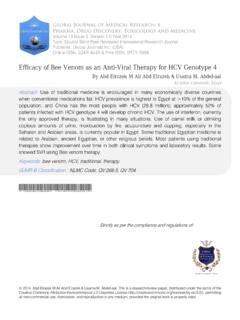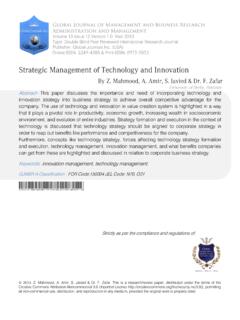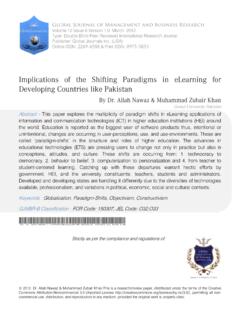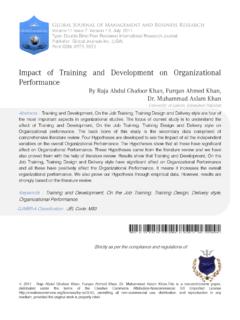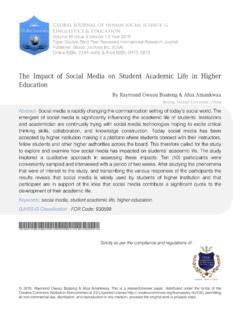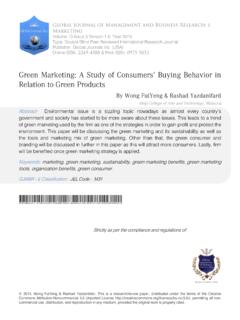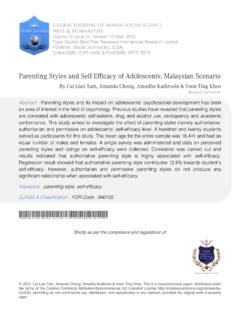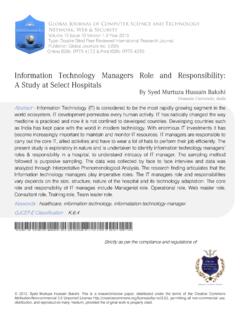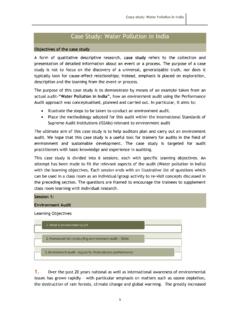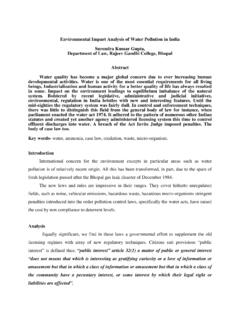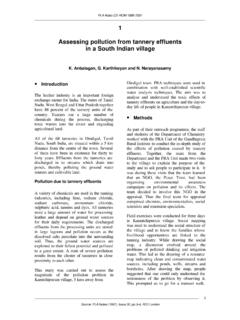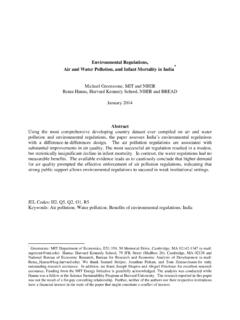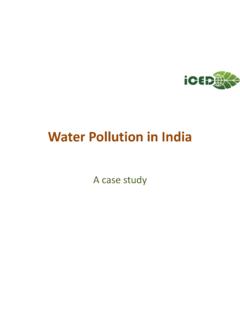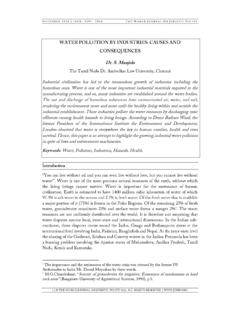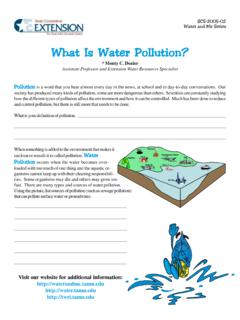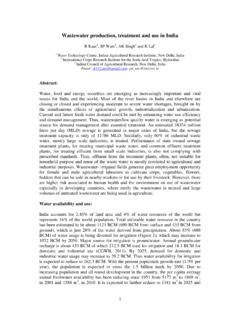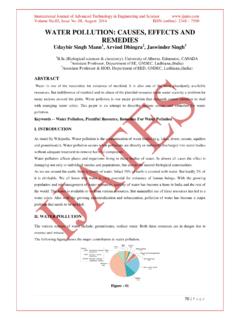Transcription of Water Pollution Status of Hiranyakeshi River from India
1 2013. Rajaram S. Sawant, Sachinkumar R. Patil, Ashvin G. Godghate & Shobha D. Jadhav. This is a research/review paper, distributed under the terms of the Creative Commons Attribution-Noncommercial Unported License ), permitting all non commercial use, distribution, and reproduction in any medium, provided the original work is properly cited. Globa l Journal of Science Frontier Research Environment & Earth ScienceVolume 13 Issue 2 Version Year 2013 Type : Double Blind Peer Reviewed International Research Journal Publisher: Global Journals Inc.
2 (USA) Online ISSN: 2249-4 626 & Print ISSN: 0975-5896 Water Pollution Status of Hiranyakeshi River from India By Rajaram S. Sawant, Sachinkumar R. Patil, Ashvin G. Godghate & Shobha D. Jadhav Dr. Ghali College, Gadhinglaj, India Abstract - The present study reveals with seasonal analysis of various physico-chemical parameters like Air temperature, Water temperature, E. C., pH, Free CO2, Alkalinity, Total hardness, Calcium hardness, Magnesium hardness, Sodium, Potassium, Chlorides, Nitrates, Phosphates, Sulfates and DO of surface Water collected from six different sampling sites from Hiranyakeshi River during January 2010 to December 2010.
3 During this period seasonal variation were observed in all the parameters from all sampling sites and found within the limits of WHO standards except at Site V. Electric conductivity at Site VI during winter and summer season were exceeding limits of WHO standards. Total hardness at Site V considerably increased than that of other Sites. Concentration of Chlorides was also considerably high at Site V in all seasons which are indication of Pollution . Over all it has been concluded that Site V is considerably polluted than that of all other Sites.
4 Keywords : Hiranyakeshi River , physico-chemical para-meters, Pollution , Water quality. GJSFR-H Classification : FOR Code: 899899, 700401p Water Pollution Status of Hiranyakeshi River from India Strictly as per the compliance and regulations of : Water Pollution Status of Hiranyakeshi River from India Rajaram S. Sawant , Sach inkumar R. Patil , Ashvin G. Godghate & Shobha D. Jadhav Author : Department of Botany. Author : Department of Zoology.
5 E-mail : Authors : Department of Chemistry, Dr. Ghali College, Gadhinglaj- 416502, (M. S.), India . Abstract - The present study reveals with seasonal analysis of various physico-chemical parameters like Air temperature, Water temperature, E. C., pH, Free CO2, Alkalinity, Total hardness, Calcium hardness, Magnesium hardness, Sodium, Potassium, Chlorides, Nitrates, Phosphates, Sulfates and DO of surface Water collected from six different sampling sites from Hiranyakeshi River during January 2010 to December 2010.
6 During this period seasonal variation were observed in all the parameters from all sampling sites and found within the limits of WHO standards except at Site V. Electric conductivity at Site VI during winter and summer season were exceeding limits of WHO standards. Total hardness at Site V considerably increased than that of other Sites. Concentration of Chlorides was also considerably high at Site V in all seasons which are indication of Pollution . Over all it has been concluded that Site V is considerably polluted than that of all other Sites.
7 Keywords : Hiranyakeshi River , physico-chemical para-meters, Pollution , Water quality. I. Introduction reshwater is essential for agriculture, industry and human existence; it is a finite resource of earth. Without adequate quality and quantity of freshwater, sustainable development will not be possible (Kumar, 2000; Mahananda et. al., 2005). Freshwater resource are becoming deteriorate day-by-day at very faster rate. Now Water quality is a global problem (Mahananda et.)
8 Al., 2005). The healthy aquatic system is dependent on the biological diversity and physicochemical characteristics (Venkateshraju et. al., 2010). Water is one of the important natural resources useful for development purposes in both urban as well as rural areas. Most of the rural communities depends upon rivers, streams, Water reservoirs, ponds, lakes etc. for their domestic as well as agricultural needs, whereas urban people depends on these Water sources for domestic and industrial purposes.
9 But on the other hand the domestic, agricultural and industrial wastes have been discharged back to these Water sources, from which these Water resources get polluted and ultimately lead to different types of diseases and toxic effects. Most of surface Water resources accessible to household use in rural areas are subjected to chemical and biological contaminations which may come from animals, septic tanks, storm Water runoff. There are various sources which are responsible to change the biodiversity of particular area (Ingole et.)
10 Al, 2011). In hydro biological studies Ganapati (1960), Sinha and Srivastava (1997) have shown that urbanization is the root cause of Water Pollution . Nevondo and Cloete (1991) observed that in area where potable Water supply are provided the supplies are unreliable and insufficient, forcing residence to reverse to traditional contaminated Water resources. It is therefore essential to monitor the physico-chemical and microbiological quality of Water supply in rural areas in order to highlight the quality of Water supply to sustained government intervention.


